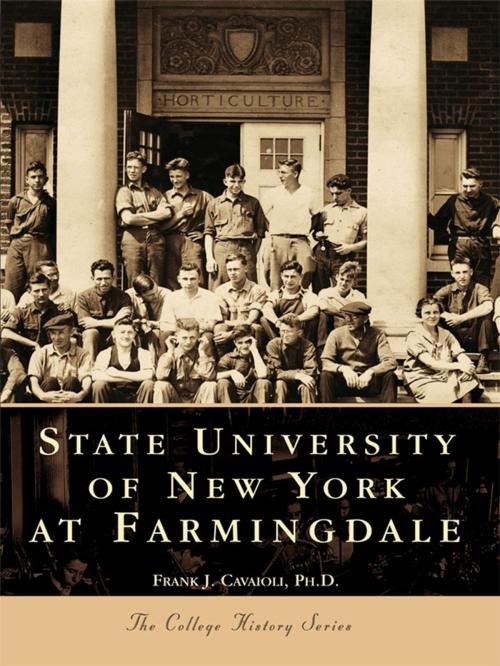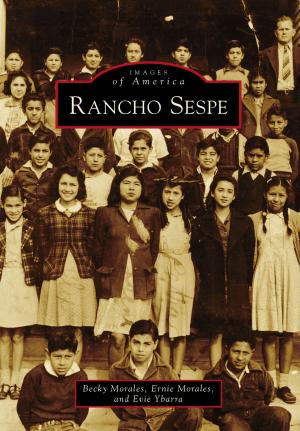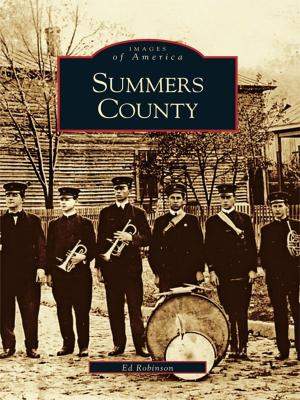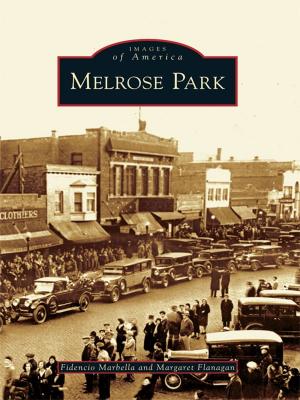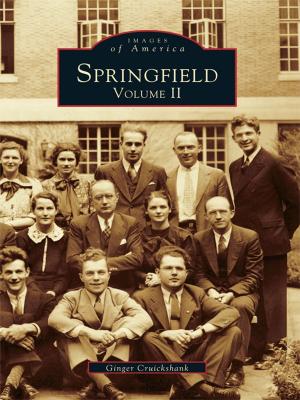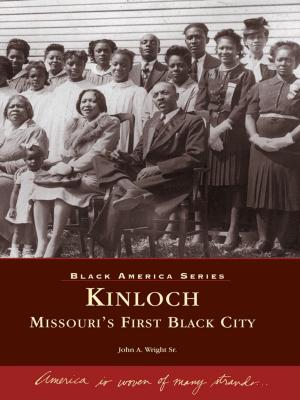State University of New York at Farmingdale
Nonfiction, Reference & Language, Education & Teaching, History, Art & Architecture, Photography, Pictorials, Travel, Administration| Author: | Frank J. Cavaioli Ph.D. | ISBN: | 9781439627464 |
| Publisher: | Arcadia Publishing Inc. | Publication: | October 30, 2000 |
| Imprint: | Arcadia Publishing | Language: | English |
| Author: | Frank J. Cavaioli Ph.D. |
| ISBN: | 9781439627464 |
| Publisher: | Arcadia Publishing Inc. |
| Publication: | October 30, 2000 |
| Imprint: | Arcadia Publishing |
| Language: | English |
The State University of New York at Farmingdale is the oldest public college on Long Island. Chartered in 1912 as the New York State School of Agriculture, its growth has reflected the Long Island region�s transition from rural to suburban and from agriculture to high technology. Its more than 50,000 alumni have achieved distinction in the public and private sectors of society. The college has contributed to the high socioeconomic status of Long Island�s 2.7 million people (Nassau and Suffolk Counties), as well as to the rest of New York State.
The State University of New York at Farmingdale presents more than two hundred photographs accompanied by detailed narrative that capture the
memorable events of SUNY Farmingdale. This fascinating story presents a snapshot of a period of local history that no longer exists. It features leaders such as Halsey B. Knapp, the director who shaped the destiny of the college; David W. Allee, who helped set up the first technical education programs; Charles W. Laffin, a president who presided during the years of great social change; and
Frank A. Cipriani, a president whose innovations prepared the way for the new millennium through the establishment of bachelor of science degrees in technical education.
The State University of New York at Farmingdale presents more than two hundred photographs accompanied by detailed narrative that capture the
memorable events of SUNY Farmingdale. This fascinating story presents a snapshot of a period of local history that no longer exists. It features leaders such as Halsey B. Knapp, the director who shaped the destiny of the college; David W. Allee, who helped set up the first technical education programs; Charles W. Laffin, a president who presided during the years of great social change; and
Frank A. Cipriani, a president whose innovations prepared the way for the new millennium through the establishment of bachelor of science degrees in technical education.
The State University of New York at Farmingdale is the oldest public college on Long Island. Chartered in 1912 as the New York State School of Agriculture, its growth has reflected the Long Island region�s transition from rural to suburban and from agriculture to high technology. Its more than 50,000 alumni have achieved distinction in the public and private sectors of society. The college has contributed to the high socioeconomic status of Long Island�s 2.7 million people (Nassau and Suffolk Counties), as well as to the rest of New York State.
The State University of New York at Farmingdale presents more than two hundred photographs accompanied by detailed narrative that capture the
memorable events of SUNY Farmingdale. This fascinating story presents a snapshot of a period of local history that no longer exists. It features leaders such as Halsey B. Knapp, the director who shaped the destiny of the college; David W. Allee, who helped set up the first technical education programs; Charles W. Laffin, a president who presided during the years of great social change; and
Frank A. Cipriani, a president whose innovations prepared the way for the new millennium through the establishment of bachelor of science degrees in technical education.
The State University of New York at Farmingdale presents more than two hundred photographs accompanied by detailed narrative that capture the
memorable events of SUNY Farmingdale. This fascinating story presents a snapshot of a period of local history that no longer exists. It features leaders such as Halsey B. Knapp, the director who shaped the destiny of the college; David W. Allee, who helped set up the first technical education programs; Charles W. Laffin, a president who presided during the years of great social change; and
Frank A. Cipriani, a president whose innovations prepared the way for the new millennium through the establishment of bachelor of science degrees in technical education.
